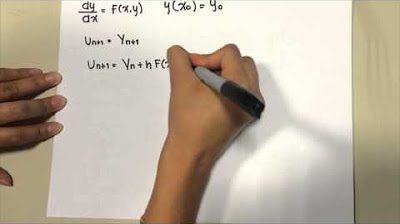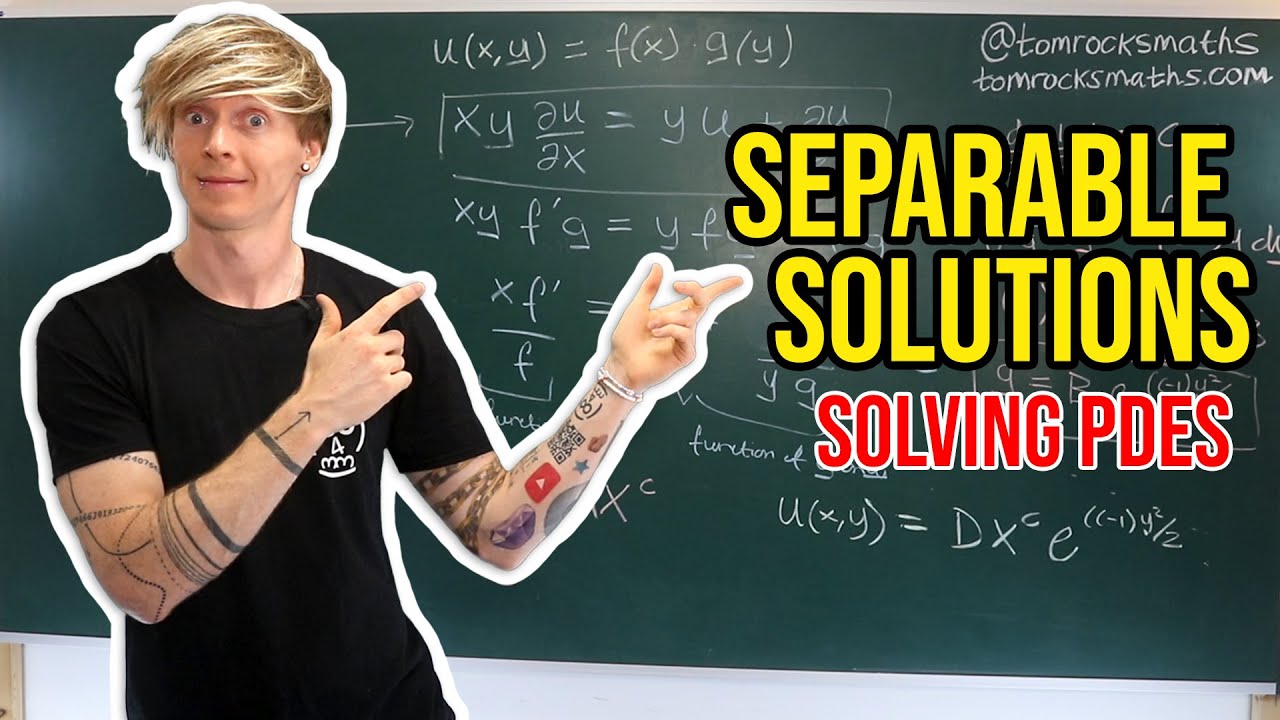Dear Calculus 2 Students, This is why you're learning Taylor Series
Summary
TLDRThis video explores how engineers and scientists approximate solutions to complex, often impossible-to-solve differential equations using methods like Taylor and Maclaurin series. It delves into real-world applications such as simulating car crashes, fluid flow, and structural stresses. Through clear examples like the simple pendulum and energy equations, the video demonstrates how these approximations can make problems more manageable without sacrificing too much accuracy. Additionally, the video introduces Brilliant.org as a learning platform for those interested in mastering these advanced mathematical concepts.
Takeaways
- 😀 Taylor and Maclaurin series are powerful tools used to approximate solutions to complex mathematical problems, especially in engineering and physics.
- 😀 Differential equations are commonly difficult or impossible to solve analytically, so numerical methods and approximations are applied to obtain usable solutions.
- 😀 Even if we can't get exact solutions, engineers and scientists need approximate results to predict behavior in real-world scenarios like car crashes or building stress tests.
- 😀 A Maclaurin series is a polynomial approximation of a function around x = 0, with increasing terms improving the approximation, making it essential for solving differential equations.
- 😀 Taylor series generalize Maclaurin series by centering the approximation at any point, not just at x = 0, providing more flexibility for solving complex problems.
- 😀 Engineers use Taylor and Maclaurin series to model real-world phenomena such as stress in materials, fluid flow, and vibrations, which are described by differential equations.
- 😀 The accuracy of these approximations depends on the number of terms included in the series; more terms lead to a more accurate result but also require more computational resources.
- 😀 For small input values, such as small angles in pendulum motion, Taylor approximations like sine(theta) ≈ theta simplify complex equations for practical use.
- 😀 The speed of sound in air can be approximated using a Maclaurin series for practical temperatures, where the error is minimal for everyday conditions.
- 😀 In cases like the energy of a moving object, Taylor series can be used to approximate complex equations, making calculations easier without significant loss of accuracy.
- 😀 Real-world problems often require approximations to make them solvable. In physics and engineering, these approximations allow for effective decision-making in design and analysis.
- 😀 The sponsor of the video, Brilliant.org, offers courses in various advanced topics, including numerical methods and Taylor series, helping learners develop deep understanding through interactive content.
Q & A
What are differential and partial differential equations, and why are they important in engineering and science?
-Differential equations describe the relationship between a function and its derivatives, representing real-world phenomena like fluid flow, heat transfer, and stress in structures. Partial differential equations are a type of differential equation that involve multiple variables, crucial for modeling complex systems such as electromagnetic fields and mechanical vibrations.
What challenges do engineers and scientists face when solving real-world equations?
-Real-world equations, especially in engineering and physics, are often complex and nonlinear, making them difficult or even impossible to solve analytically. These equations can describe forces on aircraft, stresses in buildings, and other phenomena that require approximations to solve effectively.
What role do numerical methods play in solving complex equations?
-Numerical methods are used to approximate solutions to equations that are too difficult to solve analytically. By breaking down complex problems into manageable numerical approximations, engineers and scientists can make accurate predictions about real-world systems, even without exact solutions.
What is the difference between a Taylor series and a Maclaurin series?
-A Taylor series is a polynomial approximation of a function that is centered around any point 'a' on the function. A Maclaurin series is a special case of the Taylor series where the approximation is centered at x = 0. Both methods use derivatives to create polynomial approximations of real-world functions.
How does a Maclaurin series improve the approximation of a function like e^x?
-The Maclaurin series for e^x provides a polynomial that approximates e^x around x = 0. The more terms you include in the series, the better the approximation. For example, with just two terms, you get a linear approximation, and adding more terms provides a more accurate curve that converges to the exact value of e^x as more terms are added.
How do initial conditions help in generating Taylor series solutions for differential equations?
-Initial conditions, such as the value of the function and its derivatives at a specific point (e.g., x = 0), provide key information needed to generate the coefficients of a Taylor series. By plugging these initial conditions into the differential equation, you can determine the values for the higher-order derivatives, which are used in constructing the series.
Why is it important to approximate solutions rather than solve complex equations exactly in some cases?
-In many real-world situations, exact solutions are either impractical or impossible to obtain due to the complexity of the equations. Approximation methods, such as Taylor series, allow engineers and scientists to make good-enough predictions that are still highly accurate, which is often sufficient for practical applications like crash simulations, bridge design, and more.
What is the significance of the small-angle approximation in physics and engineering?
-The small-angle approximation (where sine of theta is approximated by theta for small angles) simplifies complex equations, making them easier to work with. This approximation is particularly useful in systems like pendulums, where the angle is small enough that the error introduced by the approximation is minimal.
How accurate is the linear approximation for the speed of sound based on the Maclaurin series?
-The linear approximation for the speed of sound in air, derived from the Maclaurin series, is accurate for typical temperatures. For temperatures around 60°C, the error is less than 1%, making this approximation quite reliable for everyday use, even though it only uses the first two terms of the series.
How does the Taylor series help in approximating the behavior of electric fields in space?
-In the case of two opposite charges, the Taylor series is used to approximate the electric field at large distances from the charges. By applying the series, higher-order terms are discarded, simplifying the field strength to be inversely proportional to the distance cubed. This helps in understanding the electric field behavior without needing to calculate each term exactly.
Outlines

Этот раздел доступен только подписчикам платных тарифов. Пожалуйста, перейдите на платный тариф для доступа.
Перейти на платный тарифMindmap

Этот раздел доступен только подписчикам платных тарифов. Пожалуйста, перейдите на платный тариф для доступа.
Перейти на платный тарифKeywords

Этот раздел доступен только подписчикам платных тарифов. Пожалуйста, перейдите на платный тариф для доступа.
Перейти на платный тарифHighlights

Этот раздел доступен только подписчикам платных тарифов. Пожалуйста, перейдите на платный тариф для доступа.
Перейти на платный тарифTranscripts

Этот раздел доступен только подписчикам платных тарифов. Пожалуйста, перейдите на платный тариф для доступа.
Перейти на платный тарифПосмотреть больше похожих видео

Deret Taylor [Metode Numerik]

Taylor Series Method To Solve First Order Differential Equations (Numerical Solution)

Solving Differential Equations with Power Series: A Simple Example

Método de Euler y Euler Mejorado

Oxford Calculus: Separable Solutions to PDEs

Transform Calculus and its applications in Differential Equations
5.0 / 5 (0 votes)
